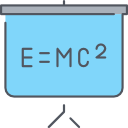
Text
Making Classroom Assessments Reliable and Valid : How to Assess Student Learning
Making Classroom Assessments Reliable and Valid by Robert J. Marzano will convince you that classroom assessments should become the primary method for formally measuring student learning over other types of assessment in education. Read about the key advantages of classroom assessments over interim, end-of-course, and state assessments in how to assess student learning and measure growth over time.
Marzano also addresses the validity and reliability of classroom assessments and how to improve those metrics before bringing them to their rightful place in K-12 assessments. This book outlines how to revamp validity and reliability to match technical advances made in classroom assessment, instead of matching large-scale assessment's traditional standards.
Using this book, teachers, schools, and districts can design classroom assessments that are equally if not more reliable and valid than traditional large-scale assessments.
How this book will convince you to use classroom assessments:
Consider the history of large-scale assessments in US education and the purpose of standardized testing. Inspect the importance of and future role of classroom assessment. Explore the three mathematical models of reliability, as well as the three major types of validity. Understand the principles of assessment for learning and the importance of measuring students' individual and comparative growth. Use the provided formulas to create classroom assessments that match traditional interim or end-of-year assessments in reliability and validity.
Ketersediaan
| 4759-2021-SC | 371.260.973 ROB m | Secondary and Pre-University's Library (Secondary) | Tersedia - Bahasa Inggris |
Informasi Detail
- Judul Seri
-
-
- No. Panggil
-
371.260 973 ROB m
- Penerbit
- Bloomington : Solution Tree., 2017
- Deskripsi Fisik
-
176p.;ill.;27cm
- Bahasa
-
English
- ISBN/ISSN
-
9781945349171
- Klasifikasi
-
371.260 973 ROB m
- Tipe Isi
-
-
- Tipe Media
-
-
- Tipe Pembawa
-
-
- Edisi
-
-
- Subjek
- Info Detail Spesifik
-
-
- Pernyataan Tanggungjawab
-
-
Versi lain/terkait
Tidak tersedia versi lain
Lampiran Berkas
Komentar
Anda harus login sebelum memberikan komentar








 Karya Umum
Karya Umum  Filsafat
Filsafat  Agama
Agama  Ilmu-ilmu Sosial
Ilmu-ilmu Sosial  Bahasa
Bahasa  Ilmu-ilmu Murni
Ilmu-ilmu Murni  Ilmu-ilmu Terapan
Ilmu-ilmu Terapan  Kesenian, Hiburan, dan Olahraga
Kesenian, Hiburan, dan Olahraga  Kesusastraan
Kesusastraan  Geografi dan Sejarah
Geografi dan Sejarah